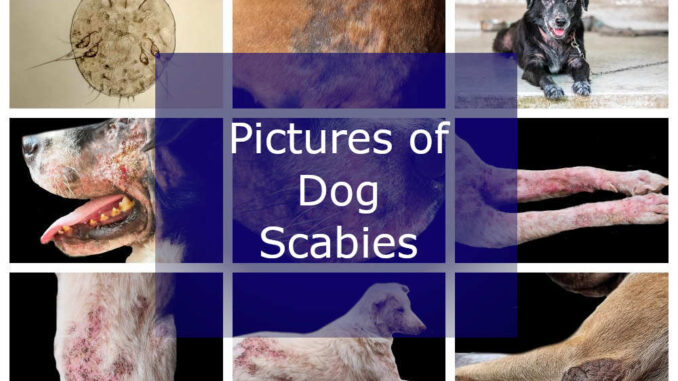
This article was updated on September 28th, 2023
In this article, our veterinarians present a visual guide to scabies, a mite that can cause significant problems in dogs. We will review several pictures of dog scabies to understand what this disease looks like.
What is Dog Scabies?
Scabies, or Sarcoptes scabiei, is a type of mite that leads to the disease called sarcoptic mange (there are two forms of mange – demodectic and sarcoptic. Demodectic mange is caused by the Demodex mite. Sarcoptic mange causes significant clinical signs and is very contagious.
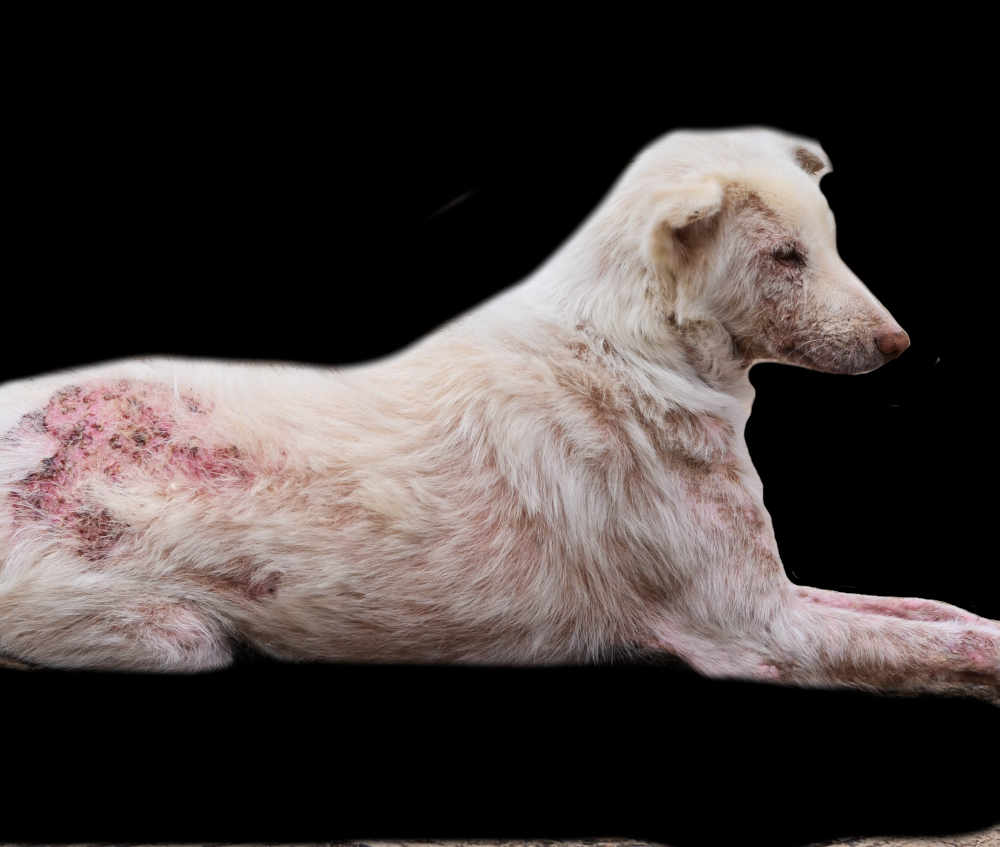
Scabies mites are invisible to the naked eye, but owners can see the havoc they wreck on their dog’s body.
- Dogs with this condition are incredibly itchy, to the point of not being able to be distracted and potentially wounding themselves.
- Dogs affected will lose fur and their skin will become crusty, irritated, and painful.
What Do Dog Scabies Look Like? (12 Pictures)
They are extremely small (and can’t be seen with the naked eye), round with 4 pairs of legs that are short and thick. The females appear slightly different as they have suckers on stalks only on the two sets of legs. Males have these stalked suckers on three pairs of legs.
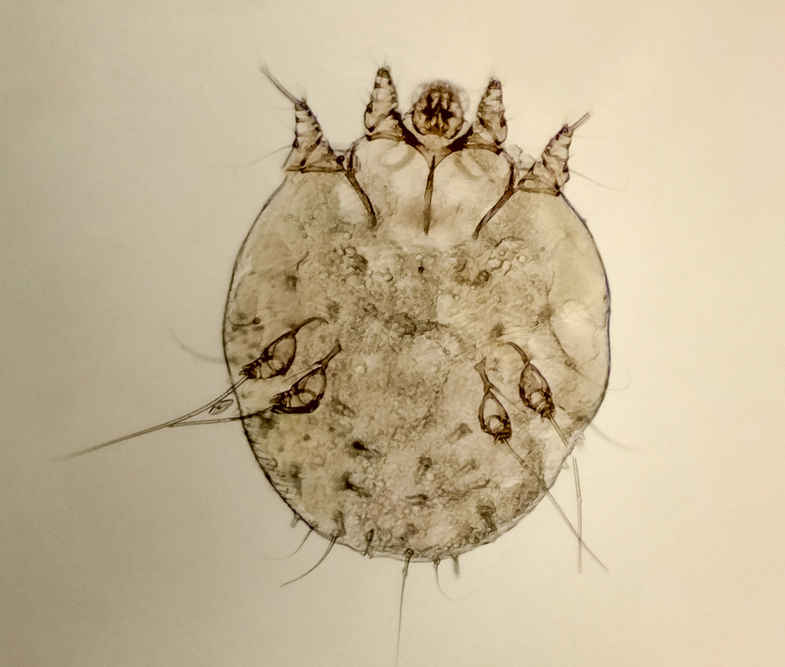
The female mite will burrow deep into the skin for egg laying. This act causes the skin to become damaged and intense itching to ensue.
What Do Scabies Look Like on a Dog?
Dogs will scratch so badly that they will cause self-trauma to their skin, damaging the surface and causing hair loss. The skin will become so irritated and traumatized that its natural barriers will be destroyed. These dogs will then be susceptible to secondary bacterial and fungal diseases, causing more problems.
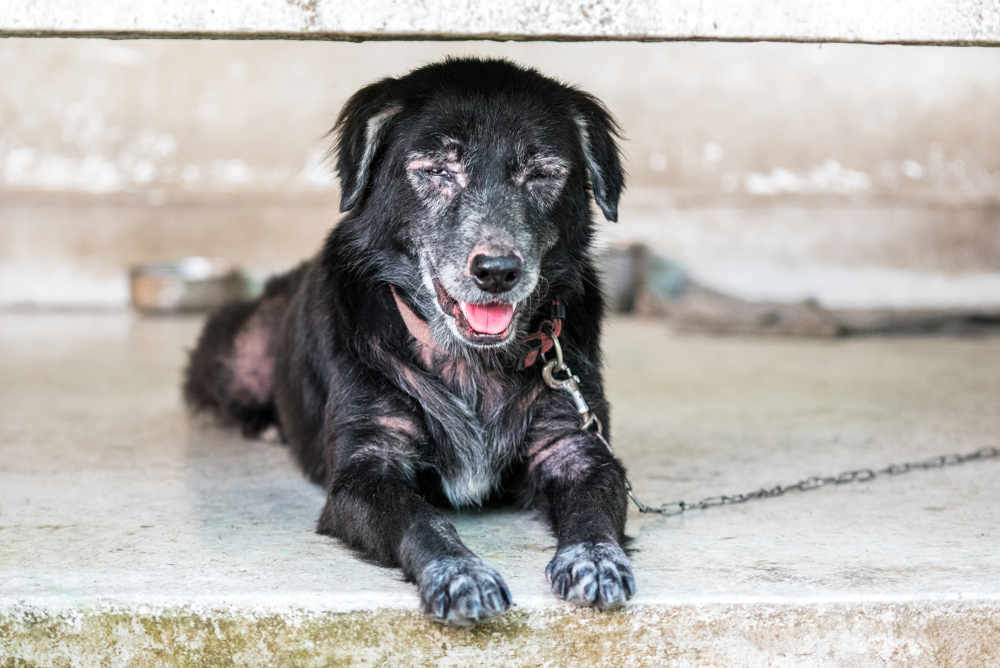

Pictures of Dog Scabies on Different Parts of the Body
These parasites can cause severe hair loss and itching almost across the entire dog’s body. In this section, we will review pictures of dog scabies on different parts of the dog’s body. This includes the legs and paws, as shown on the pictures below:
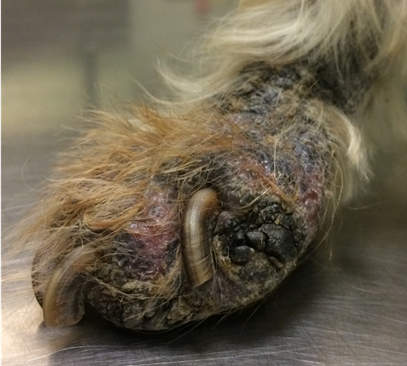
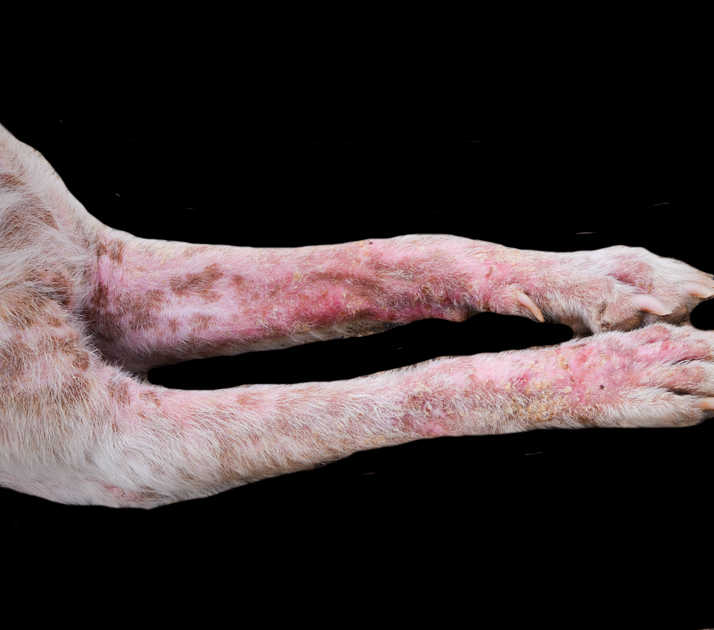
The head:
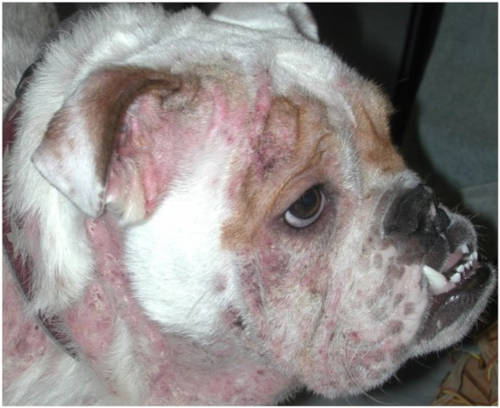
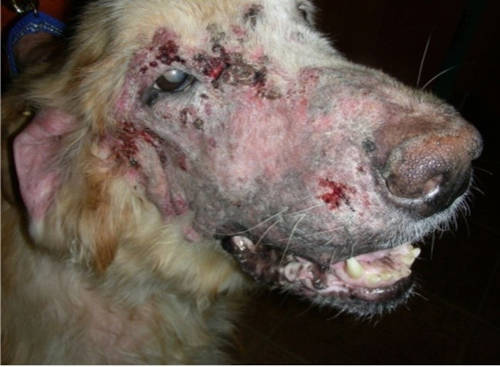
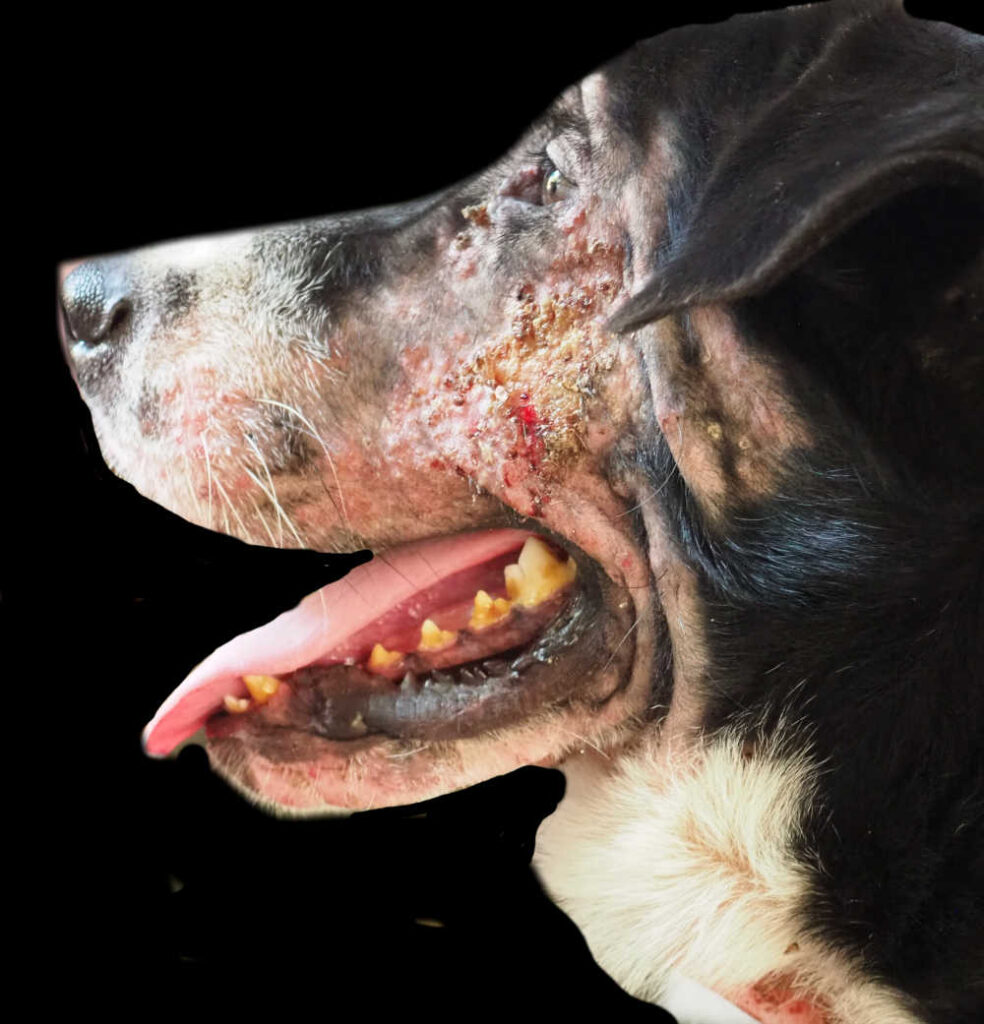
The mouth and nose:
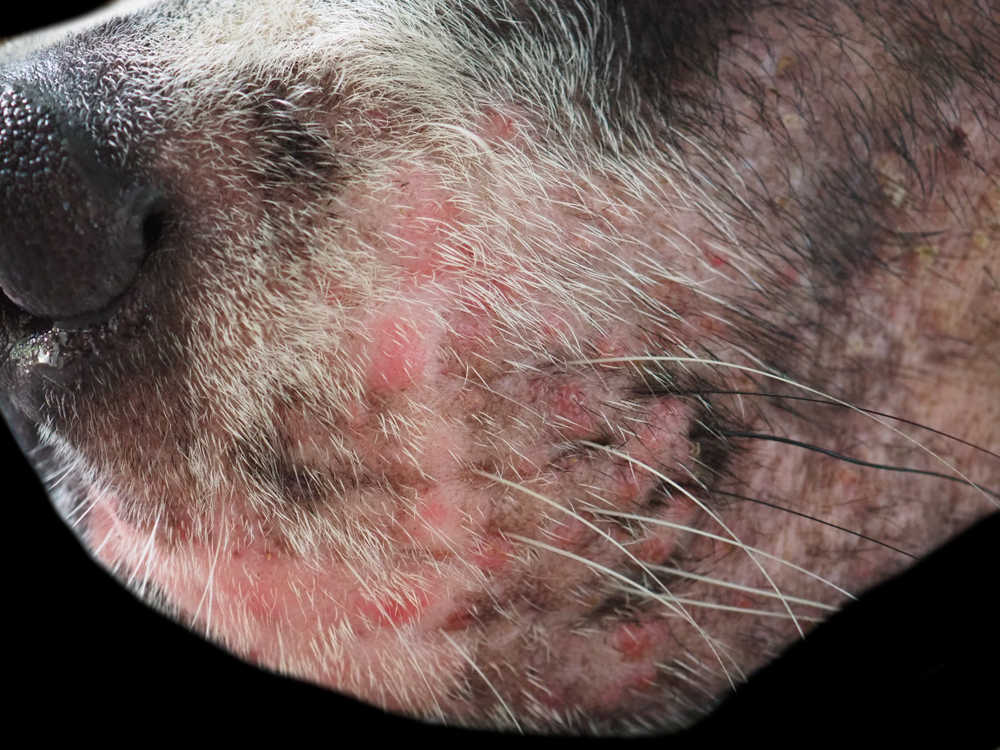
The back:
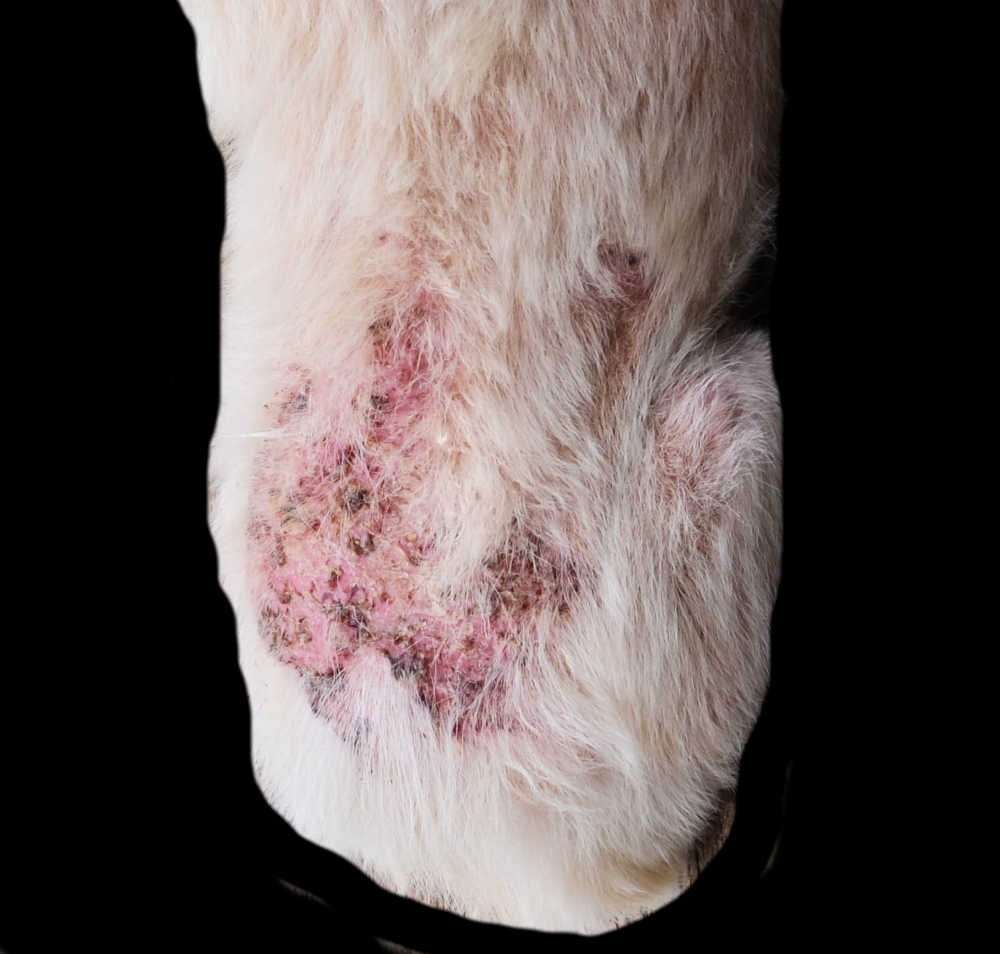
Key Signs of Scabies
Key symptoms of sarcoptic mange in dogs include:
1. Severe itching
Scabies will cause severe itching that is often more pronounced than itching caused by other types of skin disease:
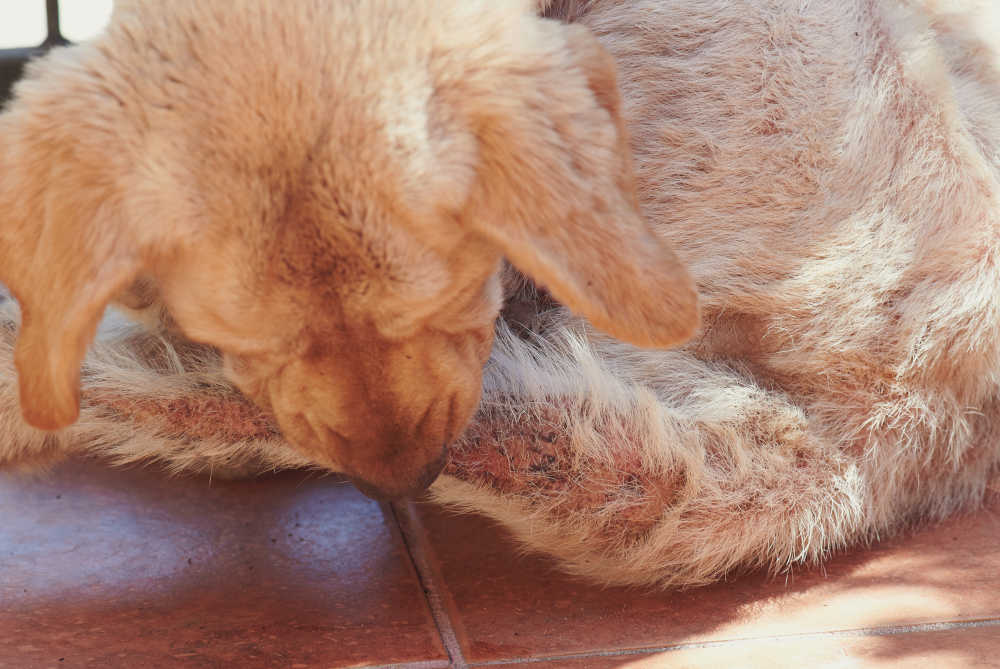
2. Hair Loss
Dogs affected by scabies will lose fur:
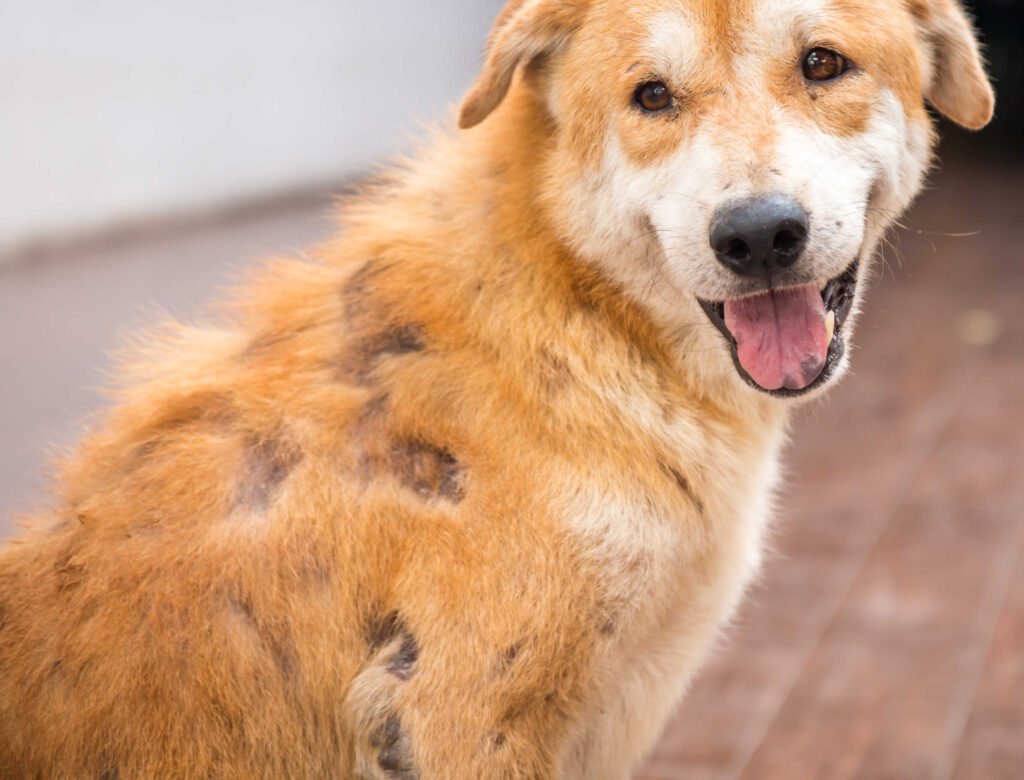
3. Crusty, irritated, and painful skin.
In addition to hair loss, dogs with scabies / sarcoptic mange will also typically cause skin irritation: Dogs will have thickened, red skin with hair loss and crusting.
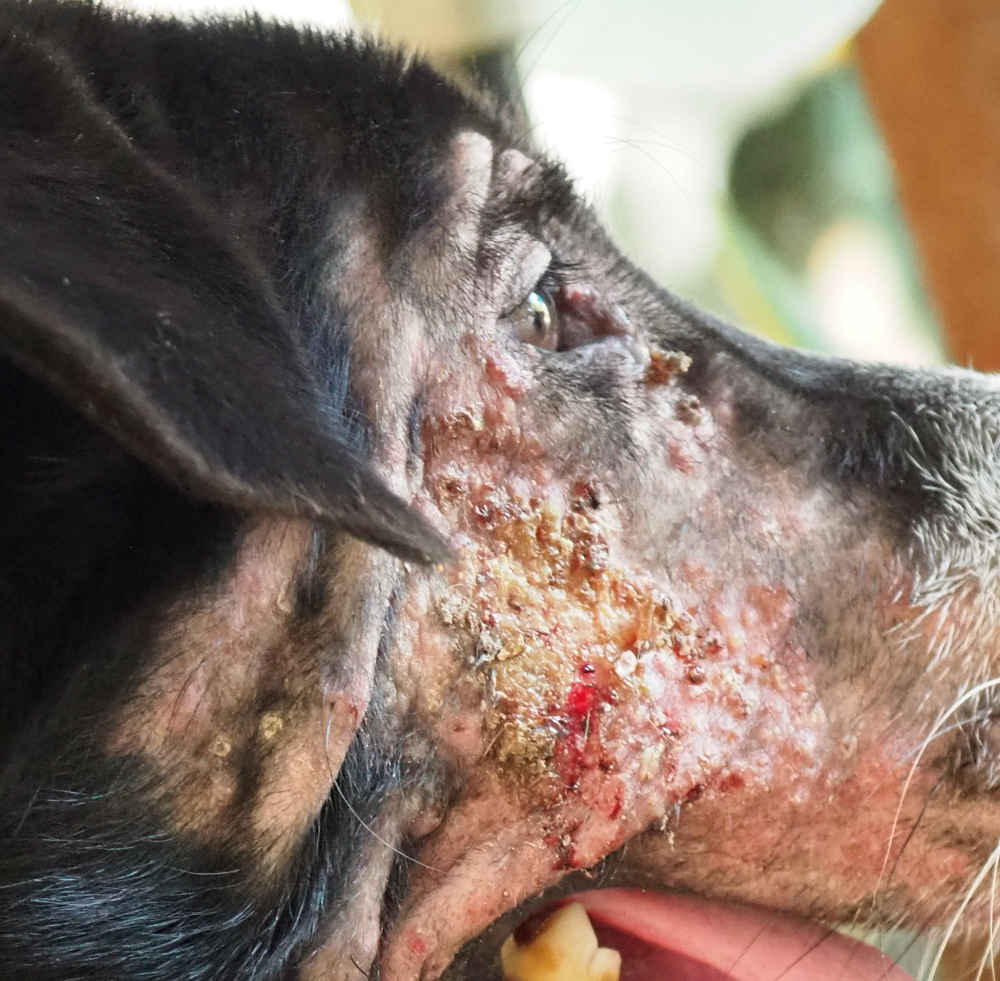
5 Steps You Can Take at Home Now to Help Your Dog with Scabies
Dogs with this disease are often miserable so action must be taken quickly with your veterinarian to resolve the problem.
- Isolate your dog – Scabies is incredibly contagious so it is best to isolate them from people and other dogs to prevent disease transmission.
- Cleaning the environment – Clean the bedding and any furniture your dog comes in contact with with a high-heat wash.
- Bathing – Bathe your dog with soothing anti-itch shampoos while treatment takes effect. This will alleviate some of the discomfort of skin irritation.
- Dog clothes – Putting a t-shirt or sweater on your dog will help prevent them from scratching and damaging the skin. Change the clothing out daily and wash on high heat.
- E-collar – Dogs that are licking and chewing must wear a cone to prevent trauma to the skin.
Learn more with our article: How to Get Rid of Dog Scabies.
Of course, it is also critical to work with your veterinarian on an effective treatment plan. Swift diagnosis will allow early treatment and the ability to have your dog feeling better ASAP. Calling a veterinarian is especially important if your dog appears systemically unwell (lethargic, not eating) or if you suspect a secondary skin infection.
Scabies is zoonotic, which means it can be passed between animals and humans.
Medical treatment is required to eliminate scabies and treat any secondary disease or infection. The most common medications to kill the mites include:
- selamectin (Revolution)
- ivermectin – Should NOT be used in Collies or other collie breeds
- milbemycin (Interceptor)
- moxidectin
- imidacloprid/moxidectin (Advantage Multi),
- lime-sulfur dips
- amitraz
- fipronil (Frontline)
- fluralaner (Bravecto)
- afoxolaner (NexGard)
- sarolaner (Simparica)
If your pet is diagnosed with a secondary fungal or bacterial infection, appropriate antibiotics or antifungal medications will also be prescribed.
Learn more with our article: How to Get Rid of Dog Scabies.
How Will my Vet Confirm Diagnosis?
As shown in the pictures above, Scabies causes a distinct appearance to the skin. This disease will cause an intense itch that is not often appreciated with other forms of skin disease.
Diagnosis of scabies is made by a technique called skin scraping. A veterinarian will use a small scalpel to scrape across the top layer of skin to exfoliate skin cells and debris. This will then be evaluated under a microscope to assess for evidence of mites or infection. Scabies mites like to burrow deep in the skin so a superficial skin scrape can sometimes miss the diagnosis.
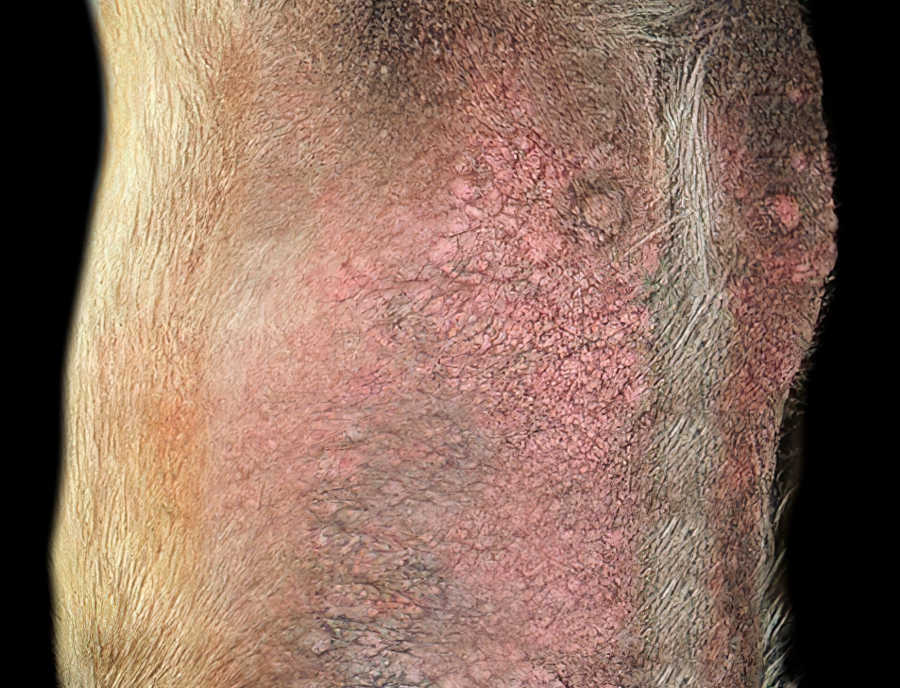
What are the Causes of Dog Scabies?
Dogs contract scabies by contact with an infected host such as a fox. Dogs who live in rural outdoor areas may be at heightened risk due to increased exposure to areas with wildlife. Dogs can also contract scabies from close contact with other dogs who are positive. This disease is extremely contagious and passed on easily if left untreated.
Dog Scabies FAQs with the Vet
• Are Dog Mites and Scabies the Same?
Mites are a category of 8-legged parasitic arachnids. Scabies is a specific species of mite. The other major types of canine mites include demodex and ear mites.
• How Should I Clean My House if My Dog has Scabies?
Environmental control will help reduce the number of mites in the home. Bedding that dogs come in contact with should either be thrown away or washed and dried on extremely high heat settings. Carpets and sitting areas should be vacuumed frequently. Chemical treatment is often not necessary and scabies mites will die within 2-3 days off the host.
• What Shampoo Kills Scabies on Dogs?
Special medicated shampoos can be used on dogs with scabies, but many of these will soothe the skin, not kill the mites. Mites are killed most often with dips and topical treatment. Lime-sulfur dips are commonly used. A few topical flea treatments will also kill mites. Active ingredients generally include selamectin, imidacloprid, moxidectin, and fipronil.
• Where is the Most Common Place for Dogs to Get Scabies?
Dogs can get mites anywhere that has a high traffic of dogs and close contact between animals. Places like these include kennels, shelters, dog daycares, and dog parks.
Dogs and foxes are the preferred hosts for scabies mites, but humans and cats can also become exposed and transiently infected.
• Is Dog Scabies a Fungal Infection?
No, scabies is caused by a parasitic mite. Dogs that have scabies may be prone to fungal infections as yeast can grow within the damaged skin.
Related posts about scabies:
Related posts about mange:
Disclaimer: This website's content is not a substitute for veterinary care. Always consult with your veterinarian for healthcare decisions. Read More.



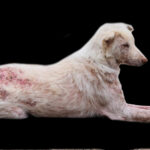

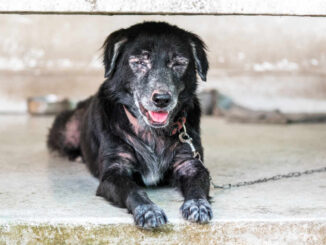
Be the first to comment